Condition reporting is the first step of the conservation process. After a painting arrives in the studio, it is thoroughly examined by our conservators to identify areas of damage and deterioration. Condition reports help to determine the level of intervention required from our team and the treatments your artwork may require to be in a safe condition.
 Above: our easel painting conservator visually assessing an oil painting on location at a church
Above: our easel painting conservator visually assessing an oil painting on location at a church
A condition report is also useful for personal or public use, as this creates important documentation of any prior damage or changes which have occurred to the piece. A condition report may want to be completed even if there are no obvious signs of damage or requirement for restoration, simply to gather an idea of the painting’s quality, risk factors, and any issues which may develop in the future.
 Above: our team taking preliminary notes for their condition report on an oil painting
Above: our team taking preliminary notes for their condition report on an oil painting
Condition reports can be used in decisions about insurance, applications for grants or funding, as well as forming part of the artwork’s records for future conservators or owners to reference.
What is a condition report?
During a condition report, our conservators will first assess the surface and reverse of the piece for any clear areas of concern, before examining both sides under magnification. A magnifying lens will help to identify even the smallest areas of risk. Our team may also use specialist lighting equipment, such as UV torches, to identify features that are not visible in normal light.
Above: an old master painting being assessed by our conservator under UV light in our London studio
Since many paintings have undergone previous restoration work, examination under UV is especially useful for identifying areas of previous repair or alteration. These show up under our specialist lighting because non-original materials appear differently under UV light when compared to the areas of original paint.
 Above: technical photography can be used to further investigate any changes to a painting over the course of it’s life
Above: technical photography can be used to further investigate any changes to a painting over the course of it’s life
From these examinations, an accurate and detailed record is made of the work’s current state, prior repairs, materials, and is accompanied by photographs of particular areas of concern for future reference. This report is crucial in helping our conservators get a thorough understanding of the issues faced by each individual painting and enables them to choose the most appropriate options for treatment.
 Above: our team of conservators working together to assess and restore complex paintings to their safest condition
Above: our team of conservators working together to assess and restore complex paintings to their safest condition
A condition report can also reveal areas of concern that may not have been noticed by an untrained eye. The report enables our team to easily communicate any concerns with the owner of the artwork to decide on the best treatment plan for them before any work commences.
What does a condition report include?
Condition reports consist of various features, including:
- Full photographs of the front and back of the painting
- Documentation of any identification details (signatures, inscriptions etc.)
- Identification of damage and deterioration
- Description of the potential causes of damage (accidental, material failure etc.)
- Detailed photographs of areas of damage
 Above: an example of a condition report written up by one of our painting conservators
Above: an example of a condition report written up by one of our painting conservators
Condition reports for paintings are written layer by layer for each element of the painting, going from the auxiliary support (often a stretcher or strainer) to the primary support (canvas, panel, copper etc.) then to the ground and paint layers and finally the varnish layers and surface soils. This helps build a very detailed account of all elements in the painting’s structure so that no areas of concern are missed.
 Above: our paper conservator restoring a miniature under a microscope to ensure the detail is correct and precise
Above: our paper conservator restoring a miniature under a microscope to ensure the detail is correct and precise
Why and how are condition reports useful?
Not only can a condition report help our conservators make the most accurate decisions, but all damage and deterioration is documented to get an overarching understanding of an individual painting and its physical history. This record will not only serve as information on the materials of the piece but be an insight into the previous changes and damages the artwork may have faced over its lifetime.
Above: our conservators assessing a painting before cleaning the surface of a large oil painting
For artwork that has been recently purchased, or for individuals or institutions which may want to know more about their painting, a condition report is a helpful tool in any analysis. Previous alterations to artwork may serve as part of a bigger story or add further context to the piece. Our conservators may suggest that any unsympathetic changes or historic restoration attempts are replaced with safer contemporary methods, so keeping a record of the previous state will help the piece to maintain a historic insight for future historians or conservators if they have any queries about prior damages, repairs, or overpainting. Having a full report documenting where past intervention is located is also useful in the case that the decision is made not to reverse past work and the reasons for this.
 Above: a member of our studio team performing a treatment which has been especially selected for the materials in a modern artwork
Above: a member of our studio team performing a treatment which has been especially selected for the materials in a modern artwork
The condition reports offered by our team differ from those which you may obtain from an auction house or salesroom, as they are conducted on a technical scale by trained conservators. This means that our team is able to give details below the surface level of the piece and find areas that may be missed without specific technology.
Who is a condition report for?
Condition reports are used by our conservators to aid in their treatment decisions, however, they also benefit the current and future owners of the piece. These records can help alleviate fears in individuals who wish to have a more complete overview of their artwork before proceeding with any conservation work. Condition reports are also vital when securing funding for a conservation grant, maintaining records on a culturally significant artwork, and assisting in the valuation of a piece for auction or insurance documentation.
 Above: assessments for condition reports can also be conducted on interior artworks such as murals before they are restored or for the purposes of inventory
Above: assessments for condition reports can also be conducted on interior artworks such as murals before they are restored or for the purposes of inventory
Where multiple paintings are being assessed, either from the same estate or as part of a larger collection survey, condition reports can also identify trends amongst groups of paintings. For example, if several paintings have a thick layer of stubborn surface soils, it may be the case that this is the product of them being displayed near a working fire, or in a smoking room. Upon identifying these issues, decisions can be made with the client about how best to preserve their artworks and find storage and display solutions to prevent similar issues from arising in the future.
Condition reports can also be a valuable asset for the insurance sector, where often historic deterioration can be exacerbated by incident-related damages. Having a complete and detailed record of the artwork’s condition helps all parties involved reach mutually agreeable decisions.
 Above: many artworks can be assessed for a condition report at the same time for the overall health check of an art collection
Above: many artworks can be assessed for a condition report at the same time for the overall health check of an art collection
The contents and details of a condition report may differ depending on the reasons they are requested for, this is to ensure that it is precise for its intended purpose. For example, an overall condition report aimed at obtaining funding may give an overview of the condition and suggested treatment plan, whilst a report for conservation records may focus on the chemical makeup of the piece and the more technical aspects which a future conservator may require.
Please see our companion document for an example of a condition report by our conservation team. For further information on professional assessments, see our web pages or documents on:
 Above: our team collaborating to discuss the best treatments for each painting in our care
Above: our team collaborating to discuss the best treatments for each painting in our care
Contact us for a professional condition report
Our conservation team offers condition reporting as an additional service, as this is not a standard part of the restoration process unless specifically arranged. These reports can be completed before or during restoration work, taking into consideration your requirements and time constraints for funding applications or external submissions of other kinds.
If you have an artwork that may benefit from a condition report, please contact our team via [email protected] or 0207 112 7576.

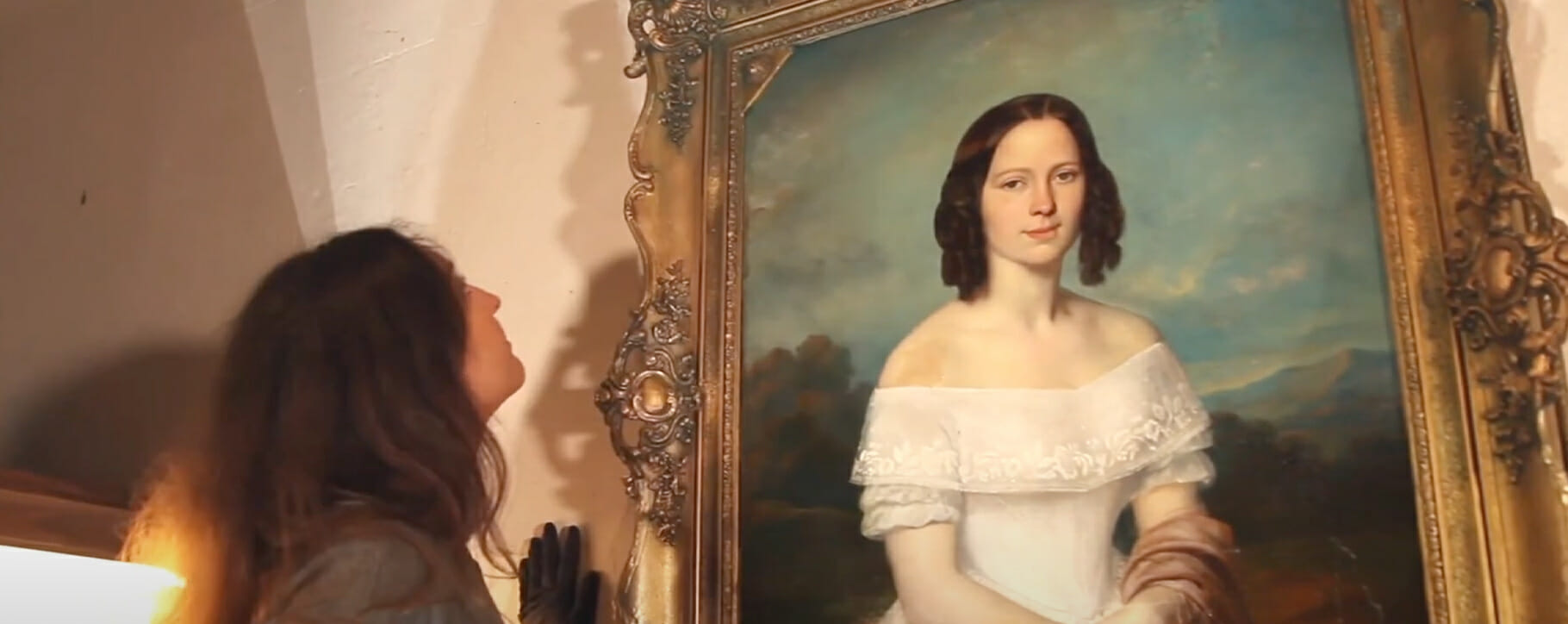 Above: our easel painting conservator visually assessing an oil painting on location at a church
Above: our easel painting conservator visually assessing an oil painting on location at a church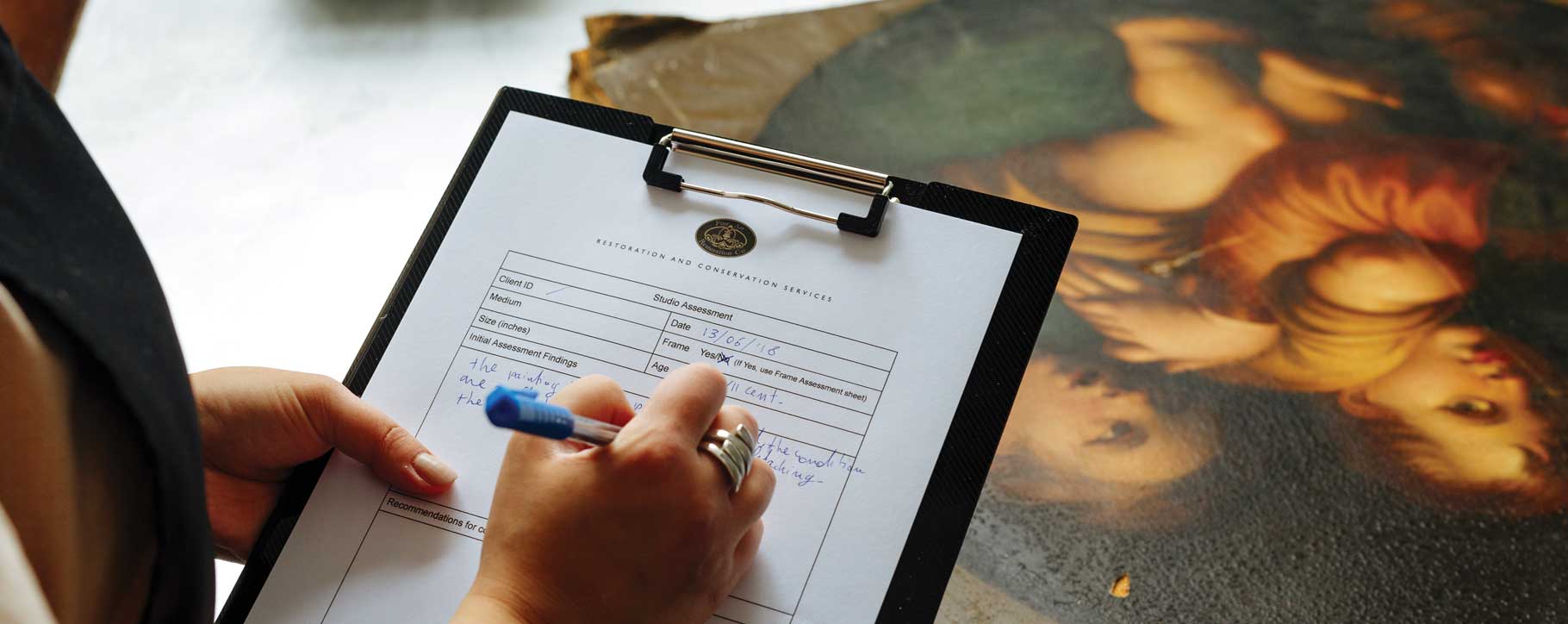 Above: our team taking preliminary notes for their condition report on an oil painting
Above: our team taking preliminary notes for their condition report on an oil painting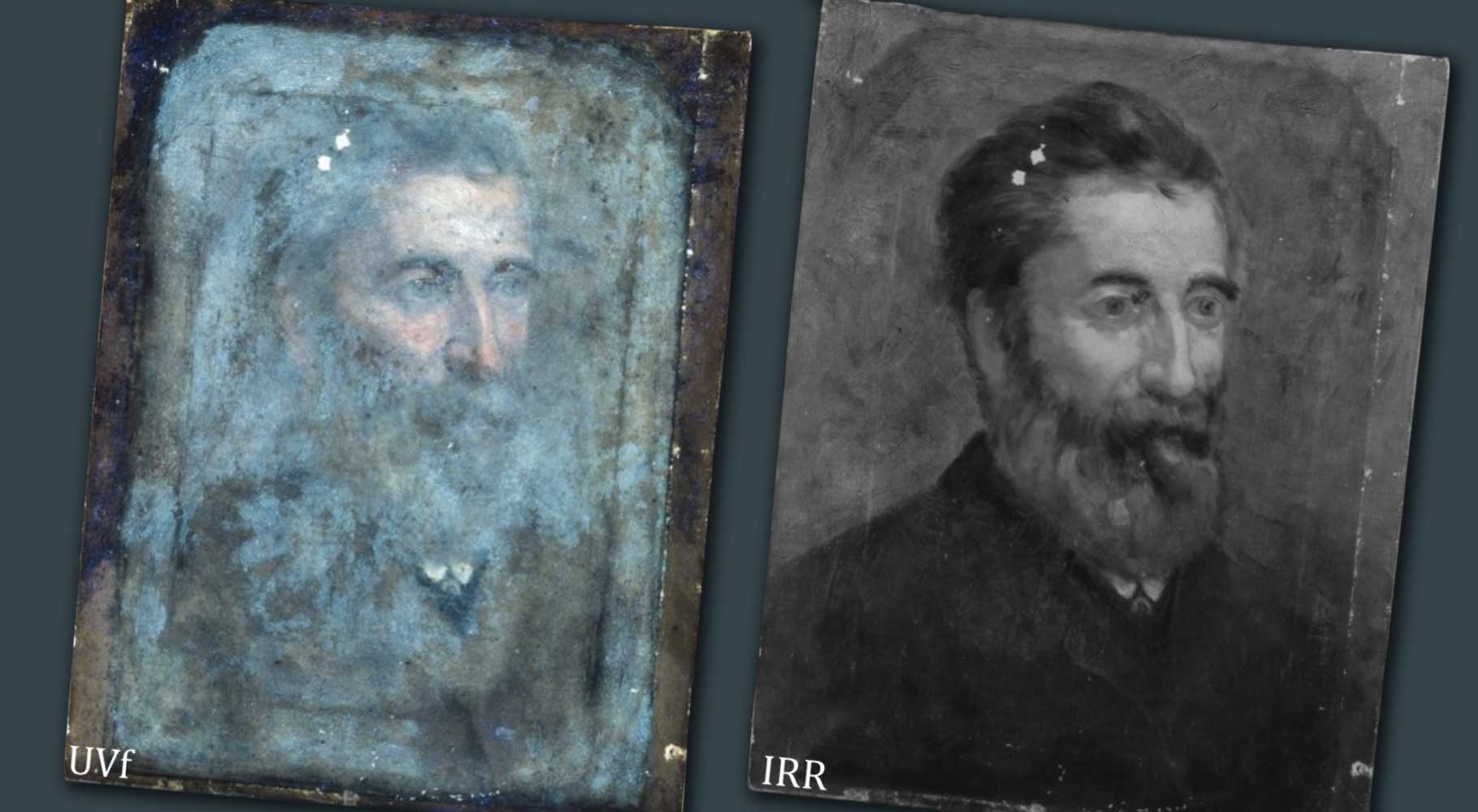 Above: technical photography can be used to further investigate any changes to a painting over the course of it’s life
Above: technical photography can be used to further investigate any changes to a painting over the course of it’s life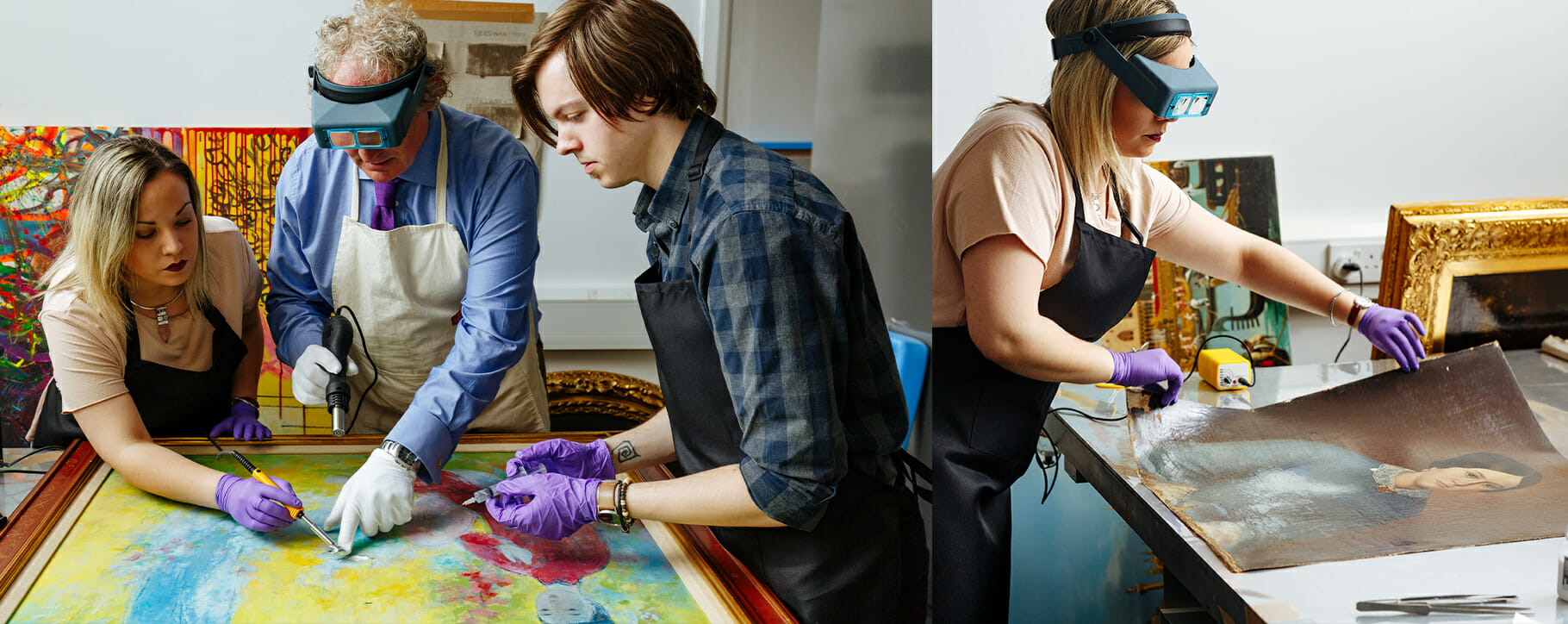 Above: our team of conservators working together to assess and restore complex paintings to their safest condition
Above: our team of conservators working together to assess and restore complex paintings to their safest condition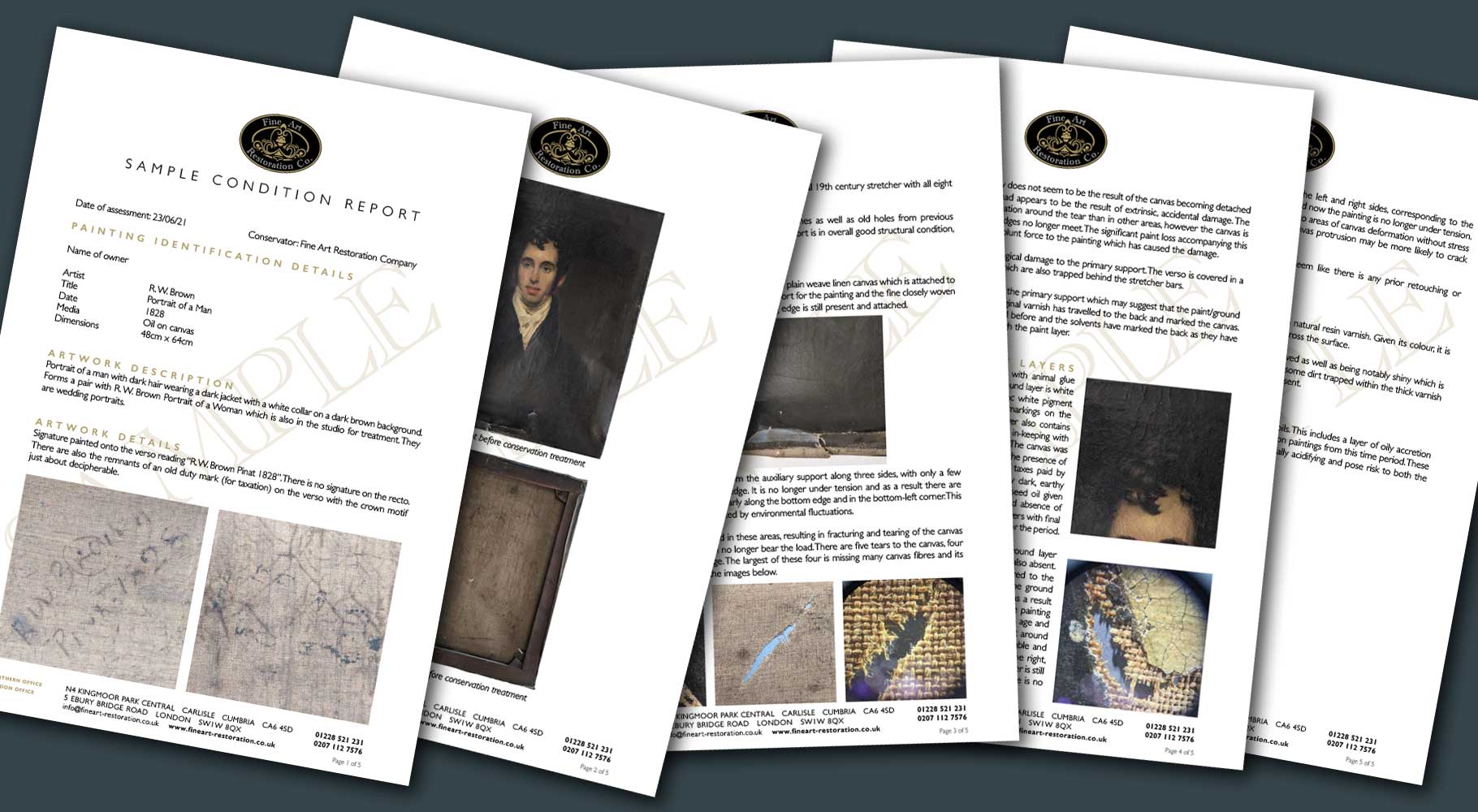 Above: an example of a condition report written up by one of our painting conservators
Above: an example of a condition report written up by one of our painting conservators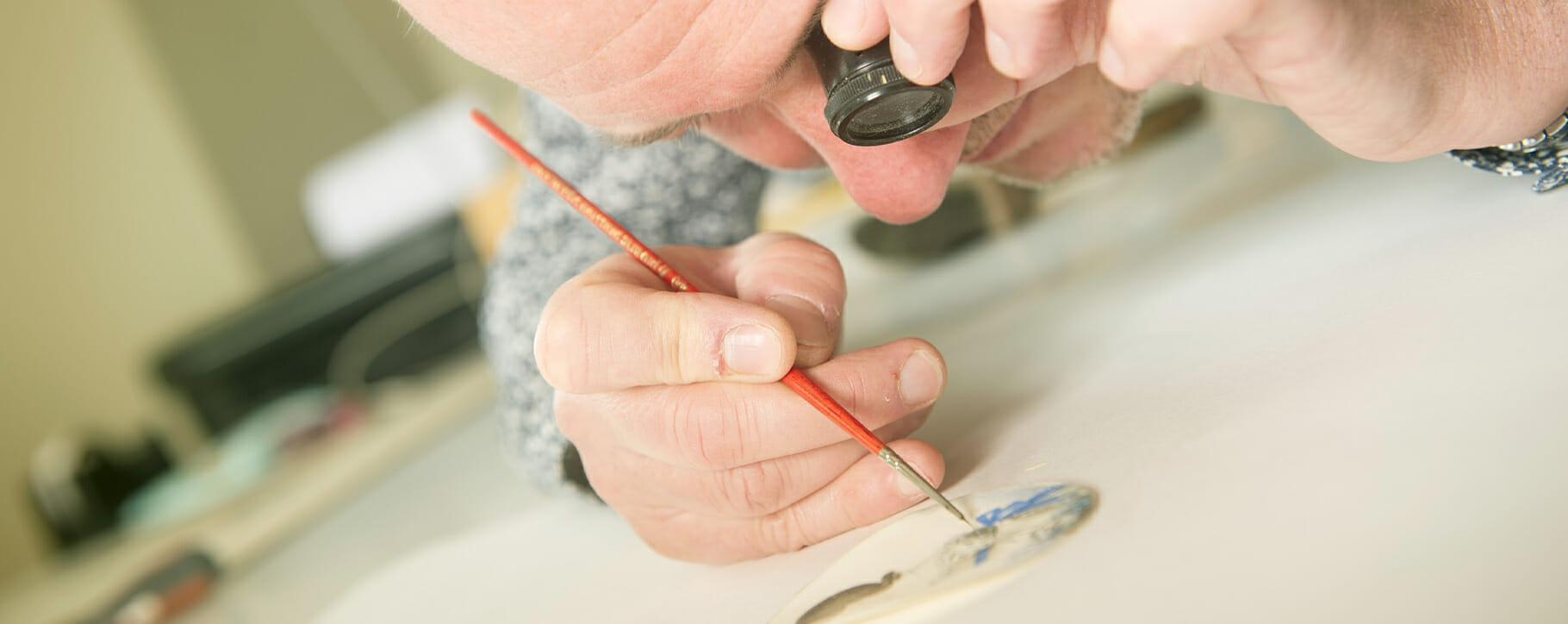 Above: our paper conservator restoring a miniature under a microscope to ensure the detail is correct and precise
Above: our paper conservator restoring a miniature under a microscope to ensure the detail is correct and precise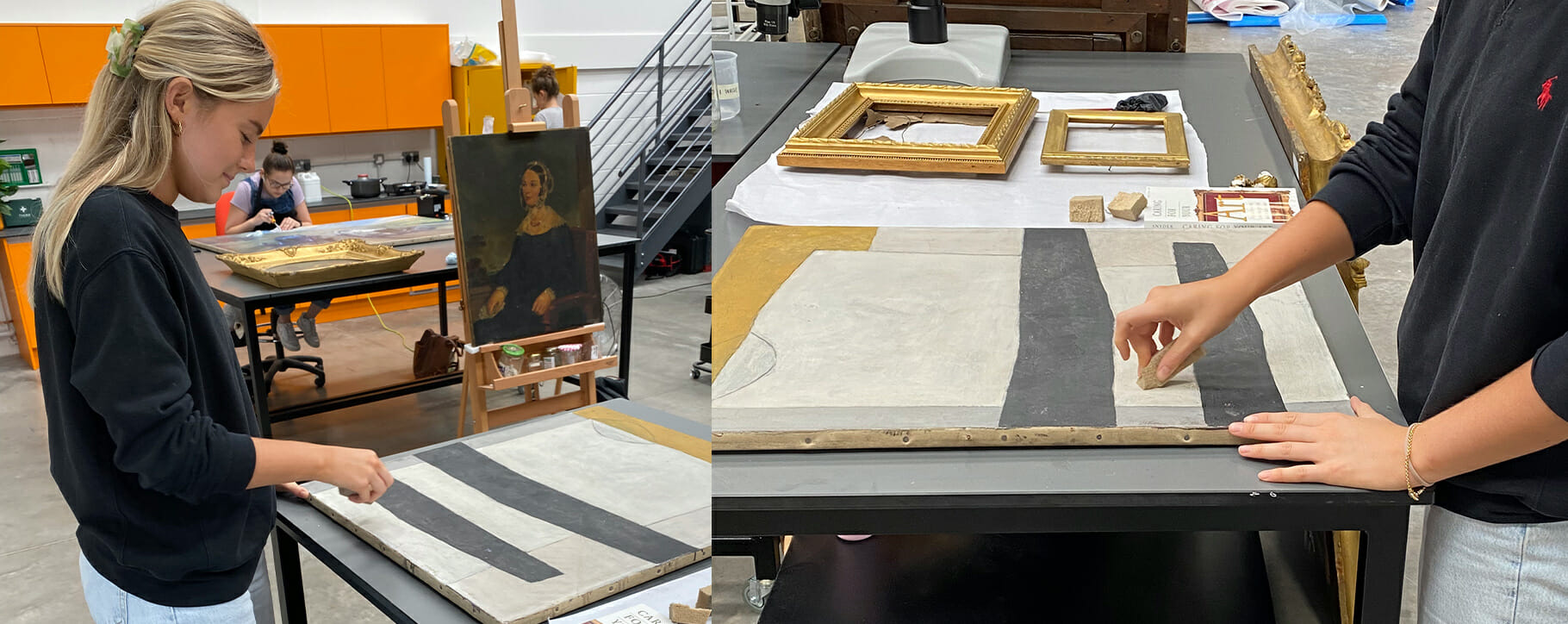 Above: a member of our studio team performing a treatment which has been especially selected for the materials in a modern artwork
Above: a member of our studio team performing a treatment which has been especially selected for the materials in a modern artwork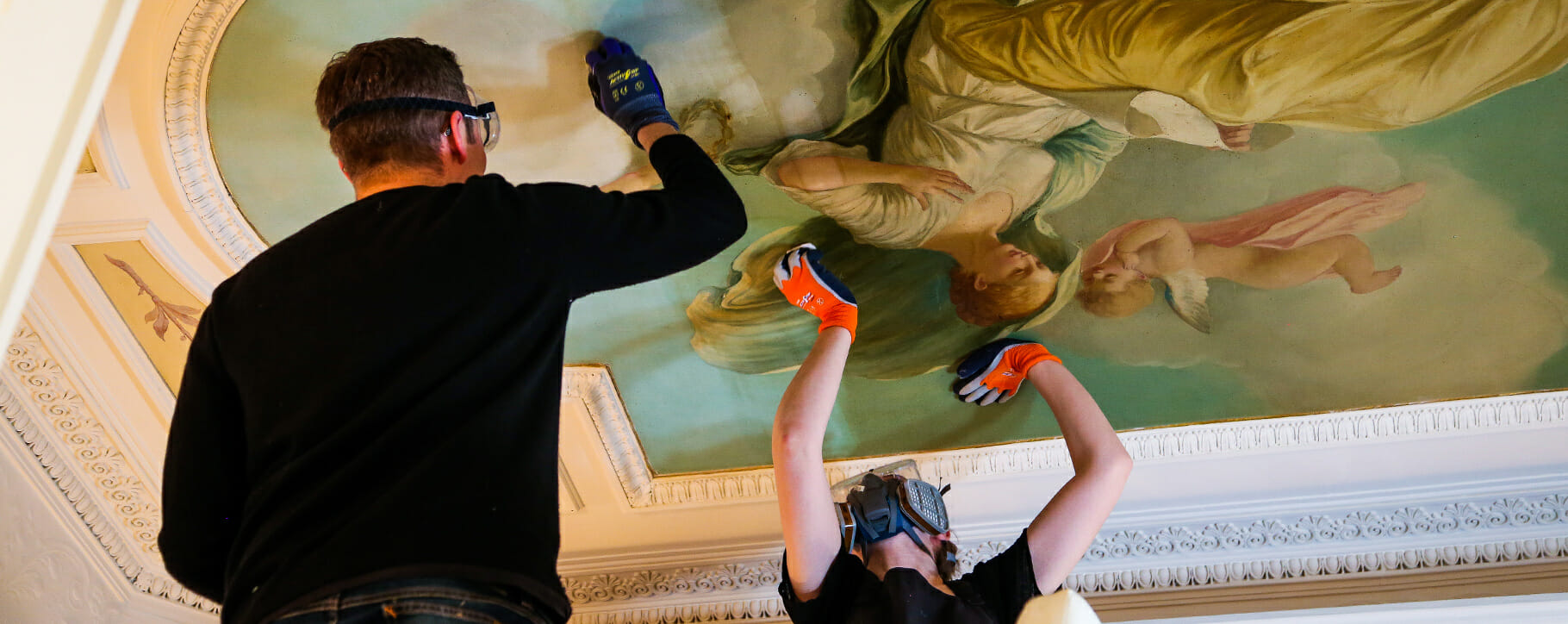 Above: assessments for condition reports can also be conducted on interior artworks such as murals before they are restored or for the purposes of inventory
Above: assessments for condition reports can also be conducted on interior artworks such as murals before they are restored or for the purposes of inventory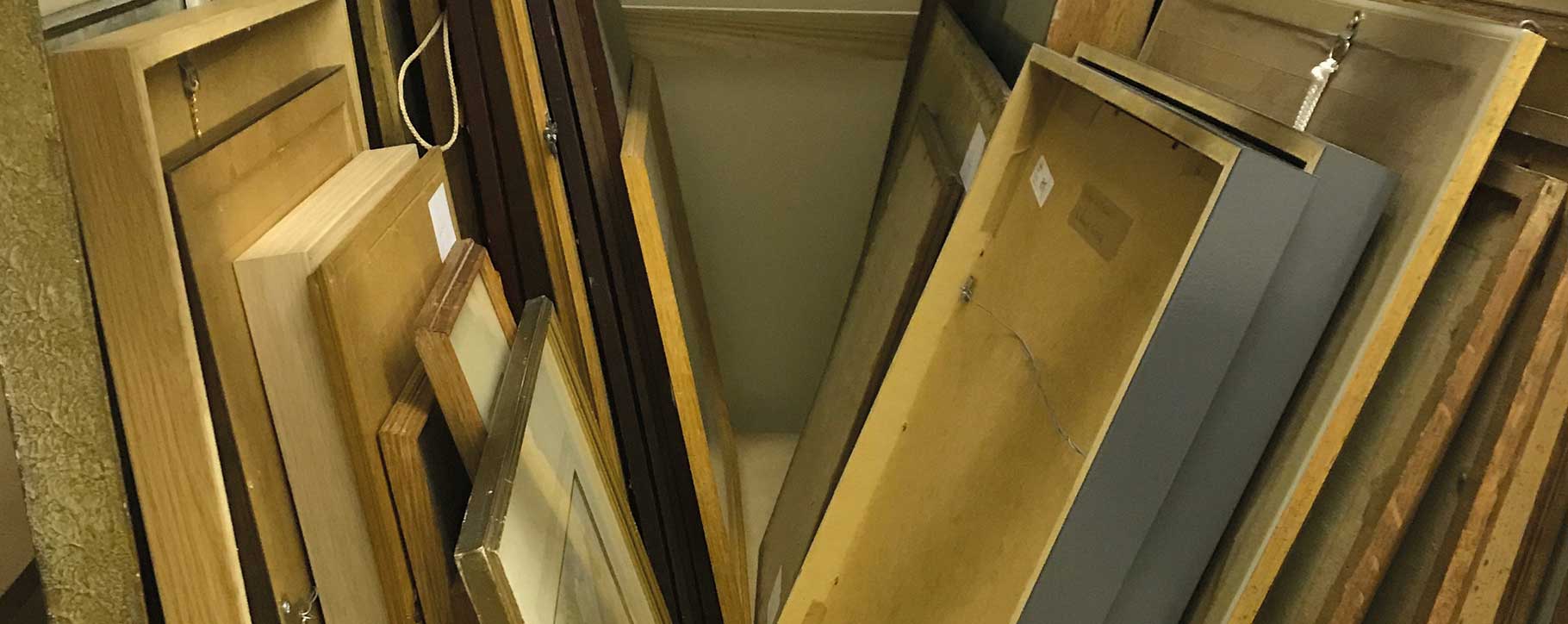 Above: many artworks can be assessed for a condition report at the same time for the overall health check of an art collection
Above: many artworks can be assessed for a condition report at the same time for the overall health check of an art collection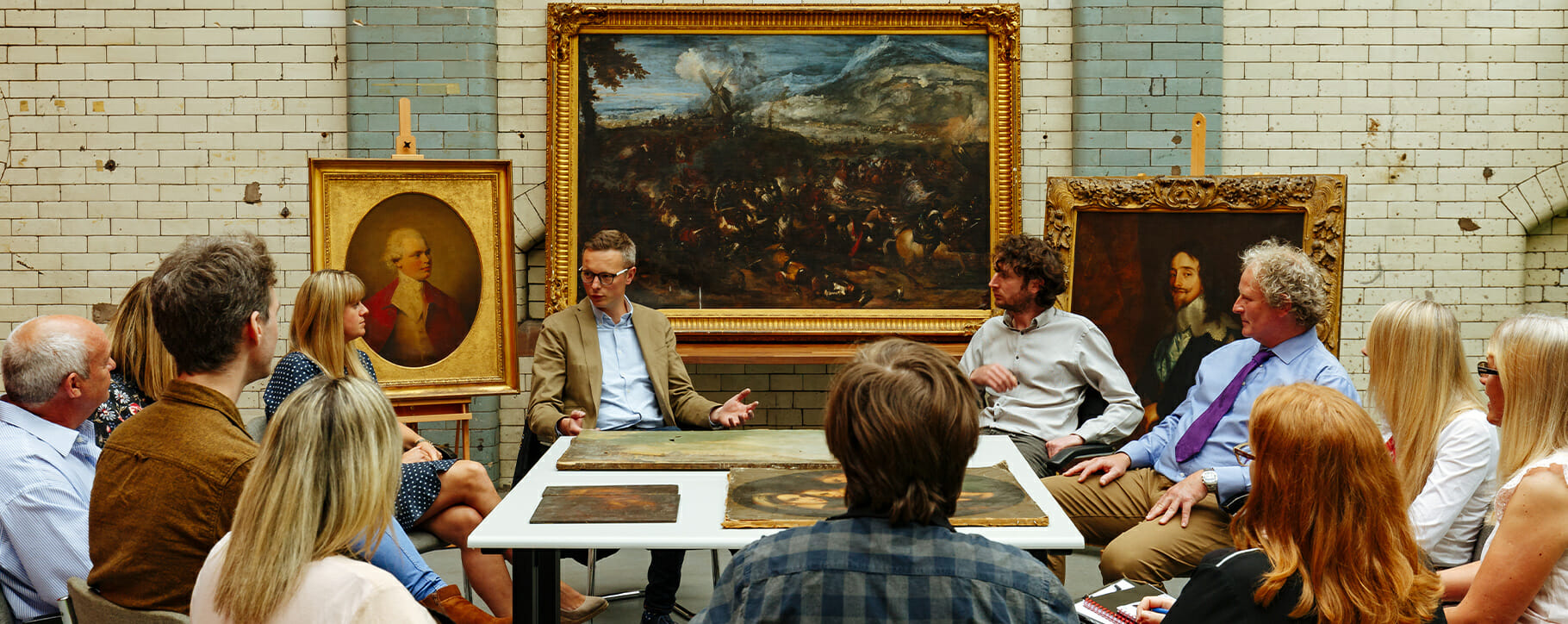 Above: our team collaborating to discuss the best treatments for each painting in our care
Above: our team collaborating to discuss the best treatments for each painting in our care




